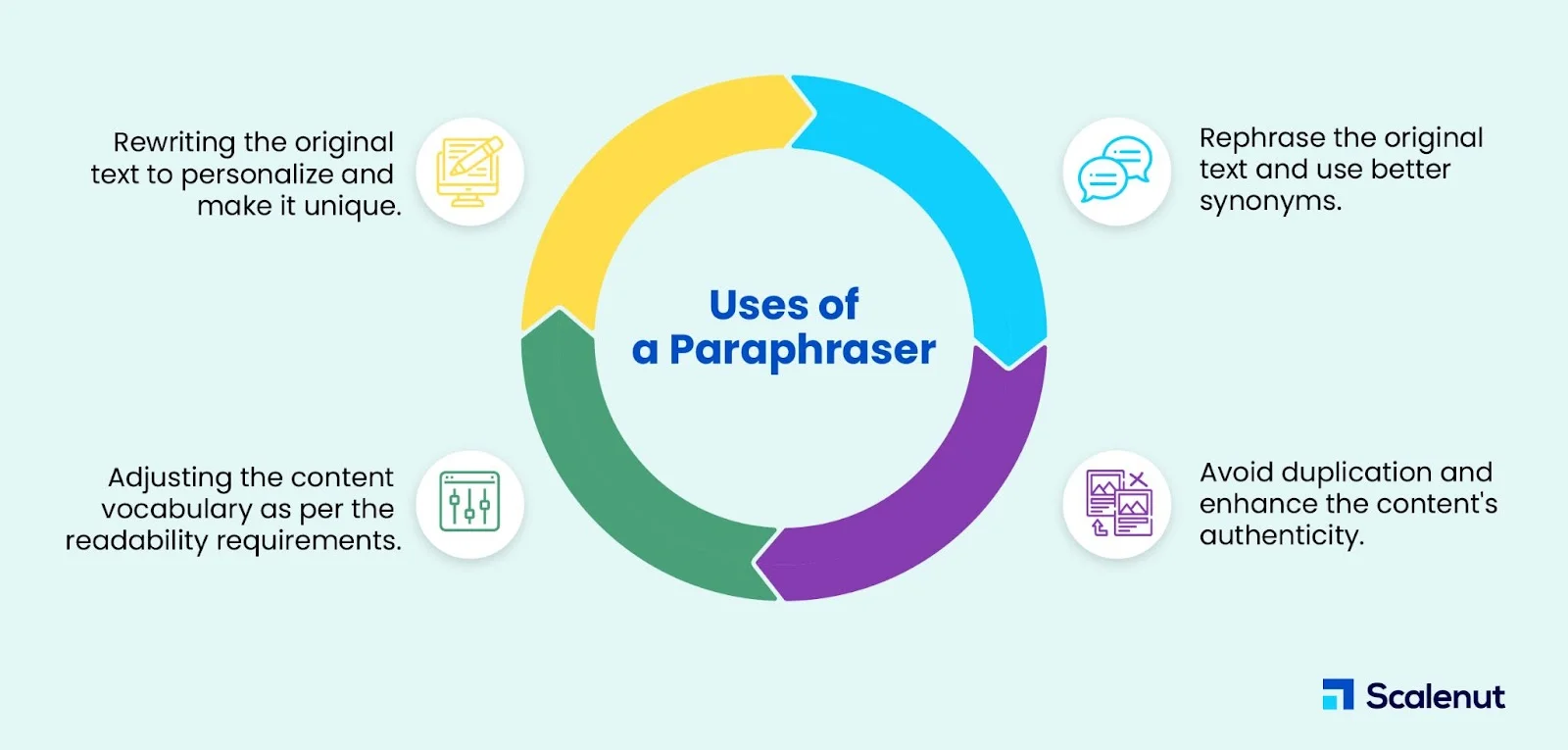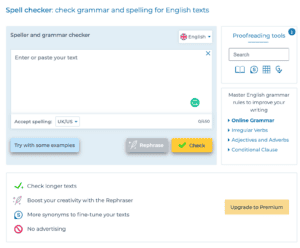Paraphrasing: Enhancing Content Through Rewriting
In the world of content creation, paraphrasing plays a crucial role in maintaining originality while improving clarity. Whether you’re a student, professional writer, or marketer, learning the skill of paraphrasing can elevate your writing by ensuring that ideas are expressed clearly and without redundancy. In this article, we’ll explore the importance of paraphrasing in content creation and the best tools to help streamline the process.
The Importance of Paraphrasing in Content Creation
At its core, paraphrasing involves restating someone else’s ideas in your own words while preserving the original meaning. It allows writers to:
- Avoid Plagiarism
Proper paraphrasing ensures that content is original, which is critical in both academic and professional settings. Using someone else’s words without attribution can harm your credibility and result in penalties, making paraphrasing a valuable skill. - Simplify Complex Information
Paraphrasing can simplify difficult concepts, making them easier for your audience to understand. This is particularly important in technical writing, where the goal is often to communicate complex ideas in a digestible way. - Improve Content Readability
Through paraphrasing, you can restructure sentences for better flow and readability. This enhances the reader’s experience and makes content more engaging.
Key Principles of Effective Paraphrasing
- Understand the Source Material
Before attempting to paraphrase, fully comprehend the original material. You can only effectively rewrite something if you grasp the key concepts and ideas. - Use Different Words and Sentence Structures
When paraphrasing, it’s not enough to simply swap out words for synonyms. The structure of the sentence should be different from the original. This ensures your version is unique. - Maintain the Original Meaning
While it’s important to change the wording, the meaning of the original text must remain intact. Altering the sense of the content defeats the purpose of paraphrasing and can mislead your readers. - Attribute Sources Appropriately
Even when you paraphrase content, it’s critical to provide credit to the original author, especially if the idea is unique or specific. This helps avoid any accusations of plagiarism.
Best Tools for Paraphrasing
- QuillBot
QuillBot is one of the leading paraphrasing tools, using AI to rewrite text while maintaining its meaning. Its flexible settings allow users to adjust the level of paraphrasing and tone, making it ideal for a variety of content types. - Paraphraser.io
This free tool is simple to use and efficient for paraphrasing both academic and professional content. It provides multiple rewrite suggestions to choose from, helping to maintain the original message while offering creative alternatives. - Grammarly
While known for grammar checking, Grammarly also offers paraphrasing suggestions. It helps rewrite awkward sentences while ensuring clarity and correctness. - Spinbot
Spinbot is a user-friendly tool that automatically rewrites sentences by suggesting alternate phrasing. It’s especially useful for bloggers and marketers looking to quickly create new versions of existing content.
How to Paraphrase Effectively
- Read the Original Text Carefully
Ensure you understand the text fully before trying to paraphrase. This helps maintain the core meaning and avoids misrepresentation. - Break Down Sentences
Take the original content sentence by sentence, then restructure and replace words to create your own version. Focus on clarity and brevity. - Use Synonyms, But Not Always
Replace words with their synonyms when possible but avoid over-reliance on them. Sometimes, different words can carry nuanced meanings that may distort the intended message. - Compare With the Original
After paraphrasing, always compare your version with the original to ensure you’ve kept the meaning but used different language and structure.
Conclusion
Paraphrasing is a valuable tool for creating original, clear, and engaging content. Whether you’re working on academic papers, blog posts, or marketing materials, mastering paraphrasing helps maintain authenticity and boosts the quality of your writing. Using tools like QuillBot, Paraphraser.io, and Grammarly can make the paraphrasing process faster and more efficient, allowing you to focus on delivering impactful content.
FAQs
1. What is the difference between paraphrasing and summarizing?
- Paraphrasing involves rewriting a specific piece of text in your own words while keeping the original meaning. Summarizing, on the other hand, condenses the main points of the text into a shorter version.
2. Is paraphrasing considered plagiarism?
- No, as long as you properly attribute the original source and do not copy the exact wording or structure of the original text.
3. How can I ensure that my paraphrasing is accurate?
- Carefully compare your paraphrased text with the original content to ensure that the meaning has been preserved while the wording and structure have changed.
4. What are the best tools for paraphrasing?
- QuillBot, Paraphraser.io, and Grammarly are popular tools that offer efficient and accurate paraphrasing options.
5. Why should I paraphrase instead of quoting directly?
- Paraphrasing allows you to demonstrate your understanding of the material and integrate it seamlessly into your writing. It also prevents over-reliance on direct quotes, making your work more original.
Top Tools to Simplify and Scale Your Paraphrasing
- QuillBot
- An advanced AI-powered tool that offers flexible paraphrasing options with a focus on maintaining meaning while improving clarity.
- Paraphraser.io
- A free, simple-to-use tool that generates multiple paraphrasing options to suit various writing styles.
- Grammarly
- Helps not only with grammar but also suggests paraphrasing options to improve clarity and readability.
- Spinbot
- Ideal for bloggers and content marketers, Spinbot provides quick paraphrasing with an easy-to-use interface.
- SmallSeoTools Paraphrasing Tool
- A widely used tool for paraphrasing that helps writers avoid plagiarism and generate unique content.
Keywords:
paraphrasing tools, QuillBot, Grammarly, plagiarism avoidance, content rewriting, SEO, paraphrasing strategies, content optimization, writing tips, paraphrasing accuracy







